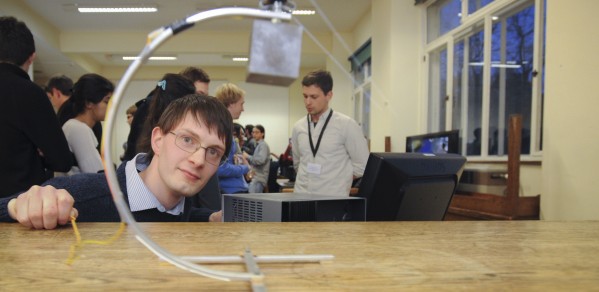
The International Myorobotics Winter School and Workshop on “Future of Robotics Based on Biological Principles” was held here at the Department of Engineering.
We're trying to learn from the natural world. We look at what animals are good at and how we can link these things into technological development.
Dr Fumiya Iida, Lecturer in Mechatronics
The Winter School and Workshop were organised by Dr Fumiya Iida, Lecturer in Mechatronics (a multi-disciplinary form of engineering) who recently joined the Department.
"We're trying to learn from the natural world," said Fumiya. "We look at what animals are good at and how we can link these things into technological development."
Myorobotics is about musculoskeletal robotic design. Myorobotics is a collaborative project, funded by the EU. The other partners are TU München, ETH Zurich, University of the West of England, Fraunhofer IPA and the University of Bristol.
Speakers at the workshop included the most advanced and active researchers of bio-inspired robotics in the world including the Department's Professor Daniel Wolpert and Professor Roberto Cipolla.
"Robots have been very useful in industry, but they usually can't come out of factories." Fumiya said.
Talk of musculoskeletal robots may sound like we are straying into 'Terminator' territory, but Fumiya explains that the next generation of robots are designed to work in specific environments, and if we want to have robots that can be used in health care and will therefore be coming into contact with humans, they will need to be lighter and more flexible. The design will have to be completely different.
One of the things the group are most interested in is the use of tendon-driven systems similar to those in the human body.
"The tendon-driven mechanism is a simple one similar to the way cranes work, but it is not trivial to be employed in complex robots." he said.
"It could be very important in making robots lighter and cheaper. If you're going to have a robot sitting next to you helping with your medical treatment, you don't want it to be huge and weigh 100kg, I think patients would find that very scary."

